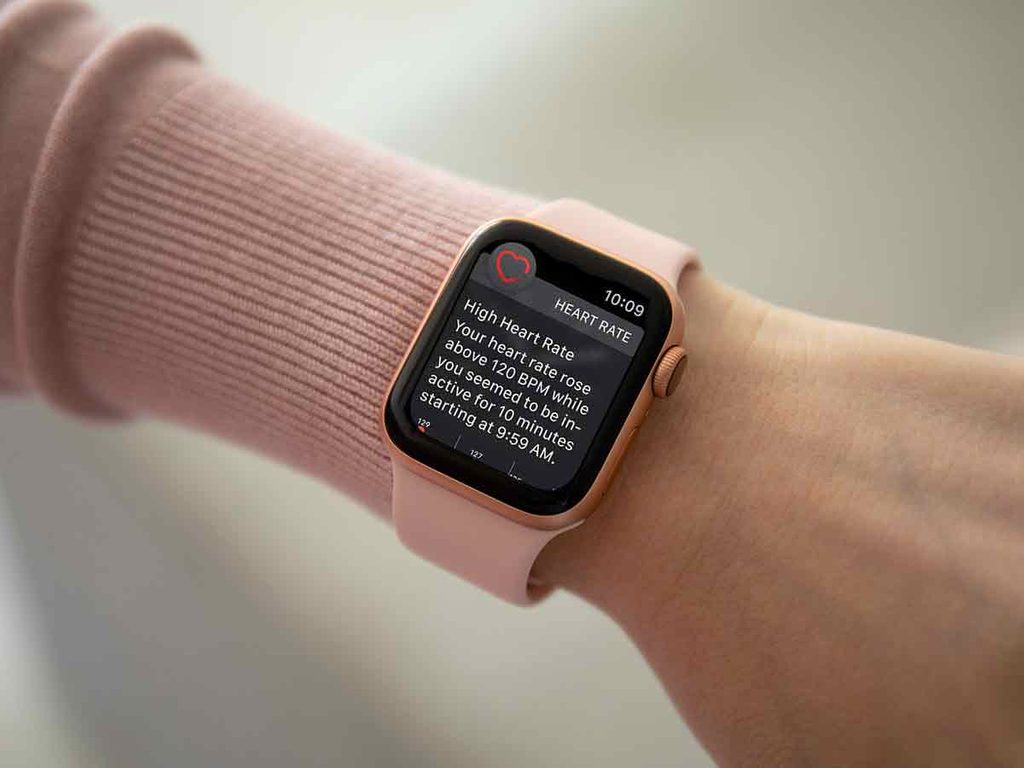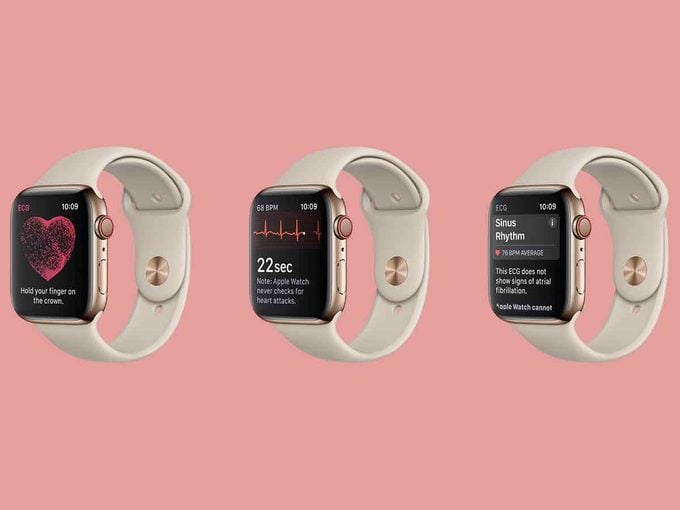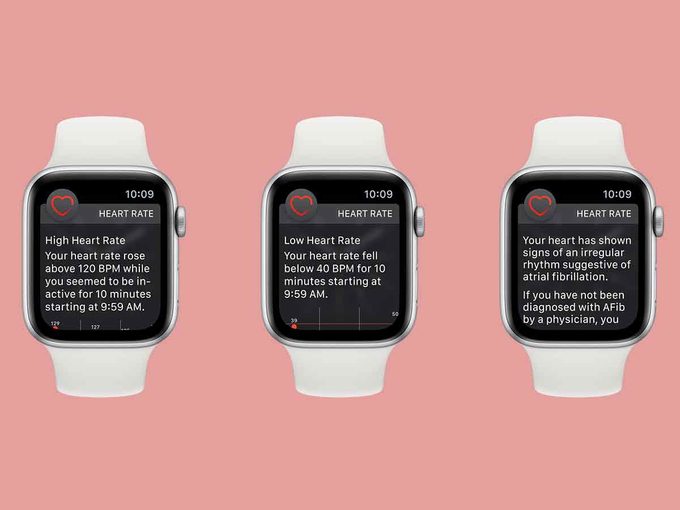Apple Watch ECG is Finally Available in Canada

Ever since Apple announced new heart features last fall, Canadians have been eagerly waiting for irregular heart rhythm notifications and the ECG app to become available here. Well, today’s the day. Here’s what to know.
Apple’s much anticipated irregular heart rhythm notifications and ECG app officially launched in Canada today. “We’ve seen the ECG App and irregular rhythm notifications on Apple Watch have meaningful impact on our customers across the United States, Europe and Hong Kong,” says Jeff Williams, Apple’s chief operating officer. “We are excited to bring these features to customers in Canada, giving them access to empowering information about their heart health.”
While the ECG app has only just become available to Canadians, some users (like this Canadian man) were already using the Apple Watch heart rate sensor to provide insight into their health. In fact, customer feedback is really what led Apple’s innovation and entry into heart health. “It was actually very organic,” says Sumbul Desai, MD, Apple’s vice president of Health. “We started off as a fitness device and we put the optical heart sensor into the watch to be able to detect the accuracy of our calorie measurements and our calorie calculations.” After introducing heart rate on Apple Watch a few years ago, Dr. Desai says Apple received a number of letters from customers who had gone to the doctor after noticing an elevated heart rate only to find out they had atrial fibrillation, a serious infection, an allergic reaction or something else that would explain what they were seeing on the heart rate app.
That insight led Apple to question what else they could measure and ultimately led to the Apple Heart Study, a clinical trial by Apple and researchers at Stanford Medicine that studied whether the app that analyzes pulse-rate data can screen for a heart rhythm disorder. Spoiler alert: It can.
The ECG app is the first ever direct-to-consumer product that allows customers to take an electrocardiogram right from their wrist. Apple was able to launch the feature for U.S. customers almost a year ago after receiving clearance from the Food and Drug Administration, but it wasn’t until earlier this spring that Health Canada approved Apple Watch software for the features.

Here, with the help of Dr. Desai, we’re answering your most common questions about Apple Watch heart rhythm notification and ECG.
What exactly is atrial fibrillation?
Atrial fibrillation (AFib) is a type of irregular heart rhythm, also known as an arrhythmia, according to the Heart and Stroke Foundation. Arrhythmias are like an electrical disturbance of the heart. “Your heart normally beats in a very normal, steady drumbeat,” says Dr. Desai. “When your heart’s playing jazz—beating all over the place—that’s usually how to characterize atrial fibrillation, and that’s not healthy for your heart.”
The most common risk factor for AFib is high blood pressure, while other common causes include diabetes, an infection or inflammation of the heart, hyperthyroidism, heavy alcohol use, and even sleep apnea.
How common is AFib? Does it always indicate something serious?
AFib is the most common arrhythmia and affects approximately 200,000 Canadians. Your risk of developing it increases with age and other factors like diabetes, high blood pressure and underlying heart disease. (Psst: Here’s how to lower blood pressure naturally.) As the Heart and Stroke Foundation explains, most people with AFib lead normal, active lives with treatment, but if left untreated, it can interfere with your quality of life. The two major complications of AFib are heart failrure and stroke. (Do you know the stroke symptoms women are likely to ignore?) “What happens is when your heart’s playing jazz, your heart’s not pumping fully and pushing blood out the way it should,” explains Dr. Desai. “It can create clots and if those clots get sent throughout your body, then that is when it can lead to stroke. That’s the biggest risk of atrial fibrillation and the one that most physicians worry about.”
What does an ECG do?
An ECG (electrocardiogram) is a test that records the timing and strength of the electrical signals that make up your heartbeat. The time in between each of your heartbeats and the strength of each heartbeat should be roughly the same. That’s known as sinus rhythm. If your heart is beating in an irregular pattern, an ECG test would show atrial fibrillation.
How does Apple Watch ECG compare to the type of ECG test I would get in a hospital?
“ECGs are normally 12 leads and they take a full, three-dimensional picture of your heart, so we’re able to take one of those 12 leads and deliver that via the watch,” says Dr. Desai. “It’s one simple picture; it’s not the full picture, so there are certain conditions you can pick up that way, and atrial fibrillation, for example, is one of them.” Dr. Desai also notes that the Apple Watch ECG is not diagnostic like a hospital device, meaning it’s really meant as a prescreening tool that can prompt users to seek out further testing from their doctor.

How does the Apple Watch ECG work?
First, let’s talk about the irregular heart rhythm notification. With the latest watch update (watchOS 5.3), this feature is available to anyone in Canada with Apple Watch Series 1 or later. Using the optical heart sensor, the feature occasionally checks the user’s heart rhythm in the background for signs of an irregular heart rhythm. If an irregular rhythm is detected on five rhythm checks over a period of 65 minutes, the watch will alert the user and prompt them to see their doctor.
The ECG app is only available with Apple Watch Series 4, thanks to the addition of built-in electrodes in the Digital Crown and the back of Apple Watch. After updating your watch, you’ll need to set up the ECG app following these steps. After that, you can take an ECG at any time, although Apple doesn’t recommend doing so daily. Instead, save it for times when you’re feeling symptoms such as a rapid or skipped heartbeat, when you have other health concerns, or when you receive an irregular heart rhythm notification. To take the test, follow these steps:
- Make sure your Apple Watch is snug
- Open the ECG app on your Apple Watch
- Rest your arm on a table or in your lap and with the hand opposite your watch, hold your finger on the Digital Crown.
- Wait for the recording to count down from 30. At the end of the 30-second recording, you will receive a classification (sinus rhythm; atrial fibrillation; low or high heart rate; or inconclusive)
- Next, tap Add Symptoms to customize the report, which will be saved to the Health app on your iPhone.
Each of your ECG results will be stored in the Health app on your iPhone or in the iCloud if you choose to backup your data and nowhere else (Apple is really serious about user privacy and maintains that each person’s health data is theirs and only theirs). That way if you want to share your health data with your doctor, you can easily access each ECG result and export it as a PDF.
What does my doctor think of these features?
You doctor will probably have questions since it is a new technology, but Dr. Desai says overall feedback from the medical community has been very positive. “The clinicians that have used it so far have found that it’s providing them with additional information about the consumer or patient that they were having a hard time capturing,” she says. “For example, when you’re living your daily life and you’re having heart palpitations that are happening at a very specific time, the ability now to capture a 30 second ECG and then go and share it with your physician has been really helpful.”
Dr. Heather Ross, head of Cardiology at the Peter Munk Cardiac Centre in Toronto, agrees: “Being able to use wearables, such as Apple Watch, to track how patients are doing in the moment, in between their episodes of care, has the potential, though not yet realized, to transform healthcare.”
Ultimately, Apple Watch ECG isn’t a replacement for your doctor’s advice or any medical tests. “We really designed those features with the intent to be used for the patient and provider to be using it in partnership. We want this to augment the doctor-patient relationship,” says Dr. Desai. (Also, see the things Canadian doctors secretly wish they could tell you.
Think of it this way: Apple Watch ECG is another tool you can use to become more empowered and proactive about your health and your healthcare. And, according to Dr. Ross, “Engaging and motivating patients to follow their heart health and advocate for their care is critical for disease prevention.”
Next, check out our other favourite Apple Watch apps.




